India has experienced a significant population surge since Partition, with numbers skyrocketing from 361 million in 1951 to over 1.2 billion in 2011. The United Nations Population Division predicts that India’s monthly population growth of about 1 million individuals could lead it to surpass China as the world’s most populous nation by 2030.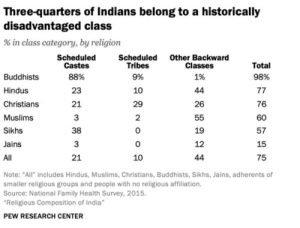
During the period from 1951 to 2011, all major religious groups in India witnessed growth. Hindus increased from 304 million to 966 million, Muslims from 35 million to 172 million, and Christians from 8 million to 28 million. However, there are indications that Christians might be undercounted in census data. This discrepancy arises from individuals identifying as Hindu to access government benefits meant for Scheduled Castes, which Christians are not typically eligible for. The 2015 National Family Health Survey showed that 21% of Christians interviewed identified as Scheduled Castes.
India’s caste system, a hierarchical social structure, has historically influenced societal roles and opportunities. Affirmative action programs, known as “reservations,” aim to mitigate caste-based disparities by allocating government jobs and educational seats for Scheduled Castes, Scheduled Tribes, and Other Backward Classes. However, these reservations are not extended to Muslims and Christians, prompting debate over their exclusion from poverty-alleviation programs.
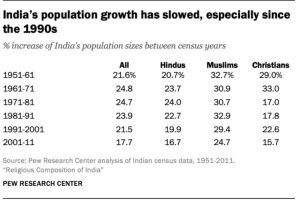
India has implemented various measures to control population growth, including contraceptive promotion and penalties for large families. These efforts have led to a slowdown in population expansion since the 1990s, with growth rates declining for all religious groups. While Hindus remain the majority, the growth rate of religious minorities has tapered off, particularly among Muslims and Christians.
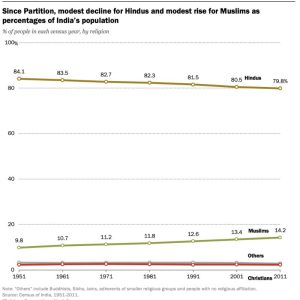
Despite slower growth rates, India’s major religious groups continue to gain millions of followers. Hindus added 138 million people between 2001 and 2011, while Muslims increased by 34 million. Christians, however, experienced the slowest growth rate among the three largest groups.
India’s religious composition has remained relatively stable since Partition, with Muslims experiencing a modest increase in percentage share while Hindus declined slightly. Christians have consistently comprised 2-3% of the population since 1951.
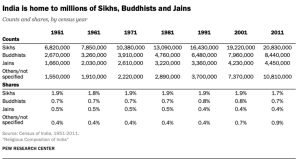
Minor religious groups, including Sikhs, Buddhists, and Jains, have seen their numbers double or triple over the decades. Geographically, Christians are concentrated in Southern states like Kerala and Tamil Nadu, while Sikhs are prevalent in Punjab.
The 2011 census revealed about 8 million people identifying with smaller religious groups, with over 80 lakh claiming no affiliation with the six largest religions. The census allows for an open-ended response to religion, with over 83 smaller religious groups represented.
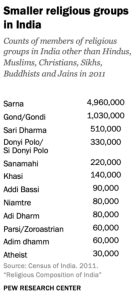
Looking ahead to 2050, demographic projections suggest continued growth for Muslims and Hindus, with Muslims expected to comprise around 18% of the population. Buddhists, Sikhs, and Jains, however, are projected to decline as a share of the population due to lower fertility rates.
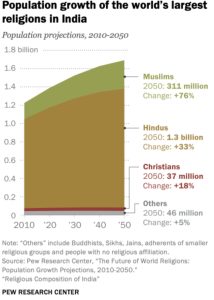
India’s population dynamics, influenced by religious demographics, continue to shape its societal landscape, with implications for policies and societal inclusion.
